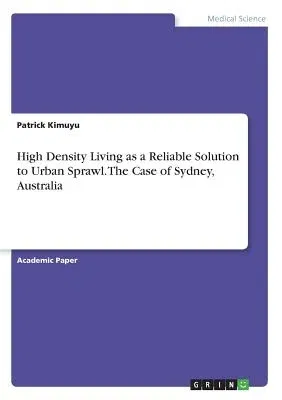Academic Paper from the year 2017 in the subject Health - Public Health,
grade: 2, Egerton University, language: English, abstract: High density
living is defined as 30 or more dwelling per hectare and embraces units,
flats, terraces, townhouses and villas. Additionally, high density
living also refers to apartment units in residential blocks of four or
more storey. Majority of high density units do not have their own
playing ground and share common facilities such as entrance foyers and
stairwells. Urban High density living has been considered as one of the
core strategies in managing urban growth. In Australia, high density is
considered as a vital strategy in managing the urban growth and reducing
the negative impact of urban sprawl. In recent times, cities such as
Sydney, Perth, Melbourne and Brisbane have been epitomized by growth in
the construction of high rise apartments. Many young people prefer these
kinds of dwelling since they offer advantages of location with proximity
to education, jobs and other services. Various researchers points out
that high density living has positive impacts such as efficient usage of
land, enhanced social interaction and reduced reliance on automobiles.
However, this form of living has also drawn criticism due to noise,
overcrowding and limited space. The draft Metropolitan Strategy for
Sydney 2031 points out that the populations will reach 1.1 million by
the years 2031 hence more houses will be required. Therefore, this
discussion paper provides a focused analysis of Sydney as a model city
for high density living, a solution to urban sprawl.


